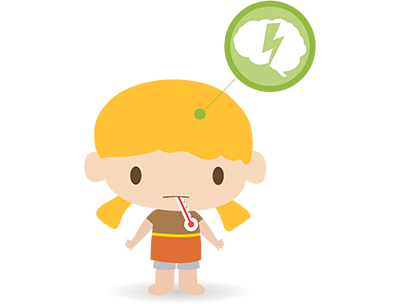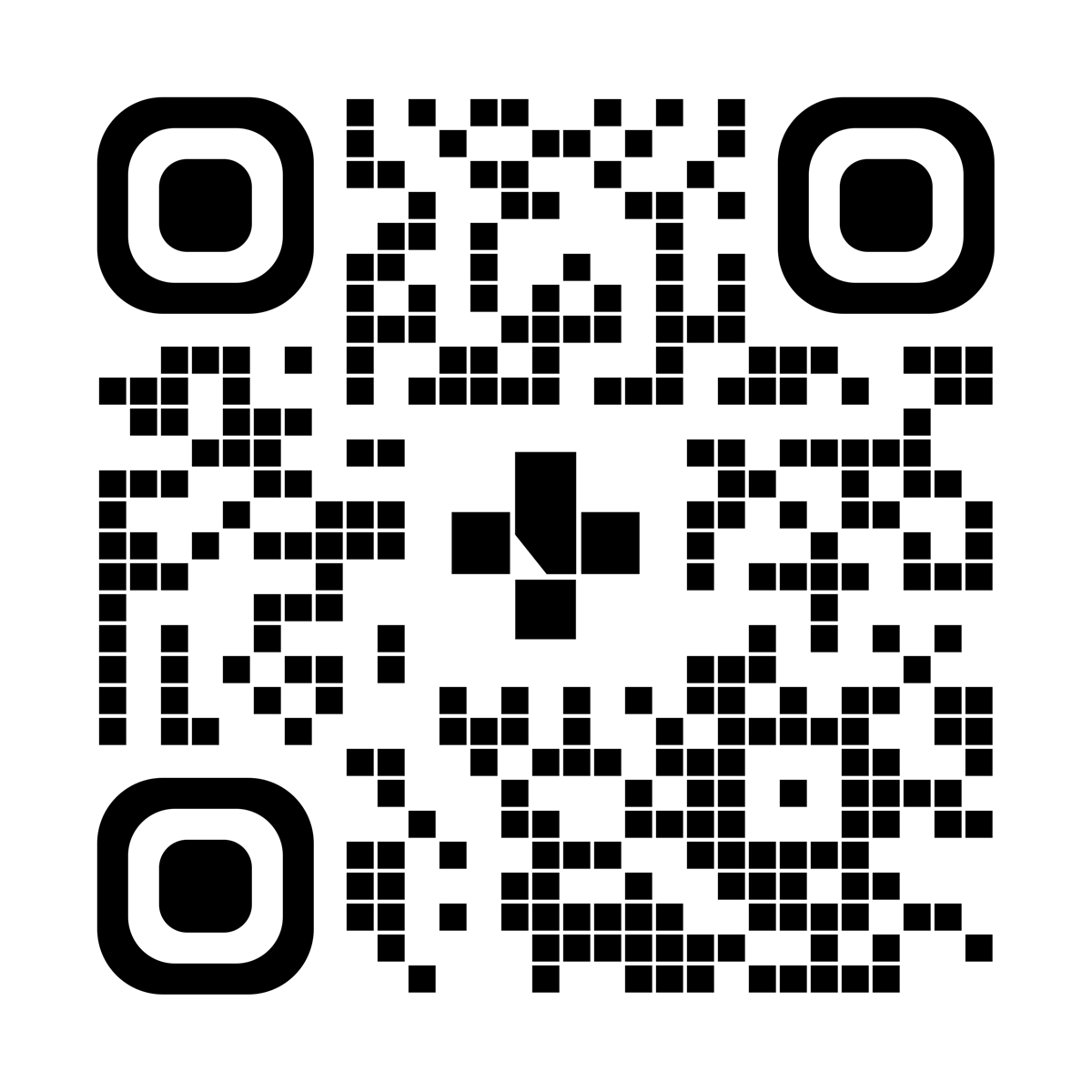Febrile Seizures in Children
HEAL

This information has been translated into other languages – see the links at the bottom of this page.
Key Points
- Febrile seizures are common in children between 6 months and 6 years old.
- Febrile seizures are episodes of uncontrolled jerking or stiffening and loss of consciousness caused by fevers.
- If your child is having a seizure, keep them safe. Do not try to put anything in their mouth. Call for help if the seizure lasts more than 3 minutes.
- Most children recover well after a febrile seizure and do not require any special tests or admission to hospital.
- Treating your child with fever medicines will help keep them comfortable but will not necessarily prevent a febrile seizure.
What Is It?
When a child has a seizure, they may have stiffening of their arms or legs, short jerking movements of their muscles that cannot be controlled, smacking of their lips, strange tongue movements, or rolling back of the eyes. Seizures almost always include loss of consciousness, so your child may not be responsive.
A febrile seizure is when your child has a seizure when they are unwell with a fever. Febrile seizures usually only last a few minutes. Febrile seizures are quite common in healthy children between 6 months and 6 years old. Close to 4 out of 100 children will have at least 1 febrile seizure during their early childhood. These seizures can be quite frightening to families but rarely cause any harm to the child.
Symptoms
Seizures occur suddenly and usually without warning. You may see the following:
- Your child will be unresponsive.
- Their eyes may roll back in their head, or to one side.
- They may make grunting noises, have more saliva in their mouth or turn purple or blue around their lips.
- Their arms and legs may go stiff or start shaking rhythmically.
What Should I Do If My Child Has a Febrile Seizure?
- Stay calm.
- Remove any nearby objects that are sharp or hard.
- If you can, roll your child gently onto their side. This prevents them from choking on mucus or vomit.
- Try and put something soft under your child’s head, like a jacket or pillow.
- Remove tight clothing, especially around your child's neck.
- Do not try to stop the seizure movements or attempt to put anything into your child’s mouth.
- Your child’s doctor will want to know how long the seizure lasted. If possible, note the time it begins (twitching of face, arms, legs) and ends (twitching stops, child may stare blankly and moan).
- If the seizure is less than 3 minutes long, take your child to see a doctor right away.
- If the seizure has not stopped after 3 minutes, call an ambulance right away.
What Will My Child Be Like After the Seizure?
- Sometimes children are confused or drowsy after a seizure and need to sleep for a while. Your child will let you know when they are ready to get up and resume normal activities.
- Be sure to wait until your child is alert before giving food, drinks or medicine by mouth.
What Will the Doctor Do When They See My Child?
When you see your doctor, they will ask you to describe the seizure in detail. They will want to know how long it lasted and how your child was moving during the seizure.
The doctor will examine your child to look for a cause for the fever and to make sure your child is acting normally. If there is a clear cause for your child’s fever (like if they have a cough and runny nose), the doctor will usually not order any extra tests. However, if your doctor feels there is something wrong, they will order some tests to rule out other possible causes of seizures.
Most children who look well after a short febrile seizure are safe to go home. A small number of children may need some tests or extra time to be observed in the emergency department before they are safe to go home.
How Can I Prevent Febrile Seizures?
It is hard to predict if and when your child will have a febrile seizure. This type of seizure usually happens as a child’s temperature begins to rise and often before the parents realize their child has a fever.
Fever medicines
- Treating your child with fever medicine will not prevent a seizure or shorten its duration.
- You may give acetaminophen (Tylenol or Tempra) or ibuprofen (Advil or Motrin) to keep your child comfortable. Use as directed on the packaging or instructed by a healthcare provider.
- Do not try and give your child fever medicines while they are having a seizure.
Anti-seizure medicine
- Most children with febrile seizures are otherwise healthy and do not require any special seizure medicines.
- There are some special circumstances where your doctor may feel your child will benefit from these medicines. If this is the case, the child will usually be started on a short-acting anti-seizure medicine. Your doctor will explain how the medicine works and when you need to seek medical attention.
Will My Child Continue to Have Seizures in the Future?
About 3 out of 10 children who have had a febrile seizure will have another febrile seizure. Most children grow out of febrile seizures. Less than 2 to 3 out of 100 kids who have febrile seizures will have a seizure disorder (epilepsy) later in life.
Do I Have to Be Extra Careful with My Child?
Remember that you have a normal, healthy child who may develop seizures in response to fevers. All children get sick once in a while, especially young children. Febrile seizures should not change your child's or family’s life very much. Treat your child the same way as any other normal healthy child.
Do Febrile Seizures Cause Brain Damage?
How a child looks during a febrile seizure can be quite frightening to families, however brief seizures cause no damage and no long-term changes to the brain.
When To Get Help
Call 911 anytime you think your child may need emergency care.
Seek immediate medical attention if:
- Your child is less than 12 months with a febrile seizure.
- Your child's seizure does not stop after 3 minutes (call 911).
- Your child is not behaving normally 20 to 30 minutes after a seizure or is very difficult to wake up.
- Your child has more than 1 seizure in 24 hours.
- Your child has a seizure without a fever.
Know your options
It can be scary when your child is sick. But in most cases, you don’t need to go to the emergency department. If you’re unsure, visit ahs.ca/options to learn about the options so you can get the care you need.
About AHS HEAL
The Alberta Health Services HEAL (Health Education and Learning) program was created by a team of doctors, nurses, and other clinical staff who work at the Alberta Children’s Hospital and the Stollery Children’s Hospital, to support families and patients with up-to-date and useful information about common childhood health concerns. Learn more at ahs.ca/heal.
To see this information online and learn more, visit: ahs.ca/heal/page12434.aspx

Other languages
Febrile seizures in children: HEAL
For 24/7 nurse advice and general health information call Health Link at 811.
Current as of: November 13, 2024
Author: Pediatric Emergency Medicine, Alberta Health Services
This material is not a substitute for the advice of a qualified health professional. This material is intended for general information only and is provided on an "as is", "where is" basis. Although reasonable efforts were made to confirm the accuracy of the information, Alberta Health Services does not make any representation or warranty, express, implied or statutory, as to the accuracy, reliability, completeness, applicability or fitness for a particular purpose of such information. Alberta Health Services expressly disclaims all liability for the use of these materials, and for any claims, actions, demands or suits arising from such use.
